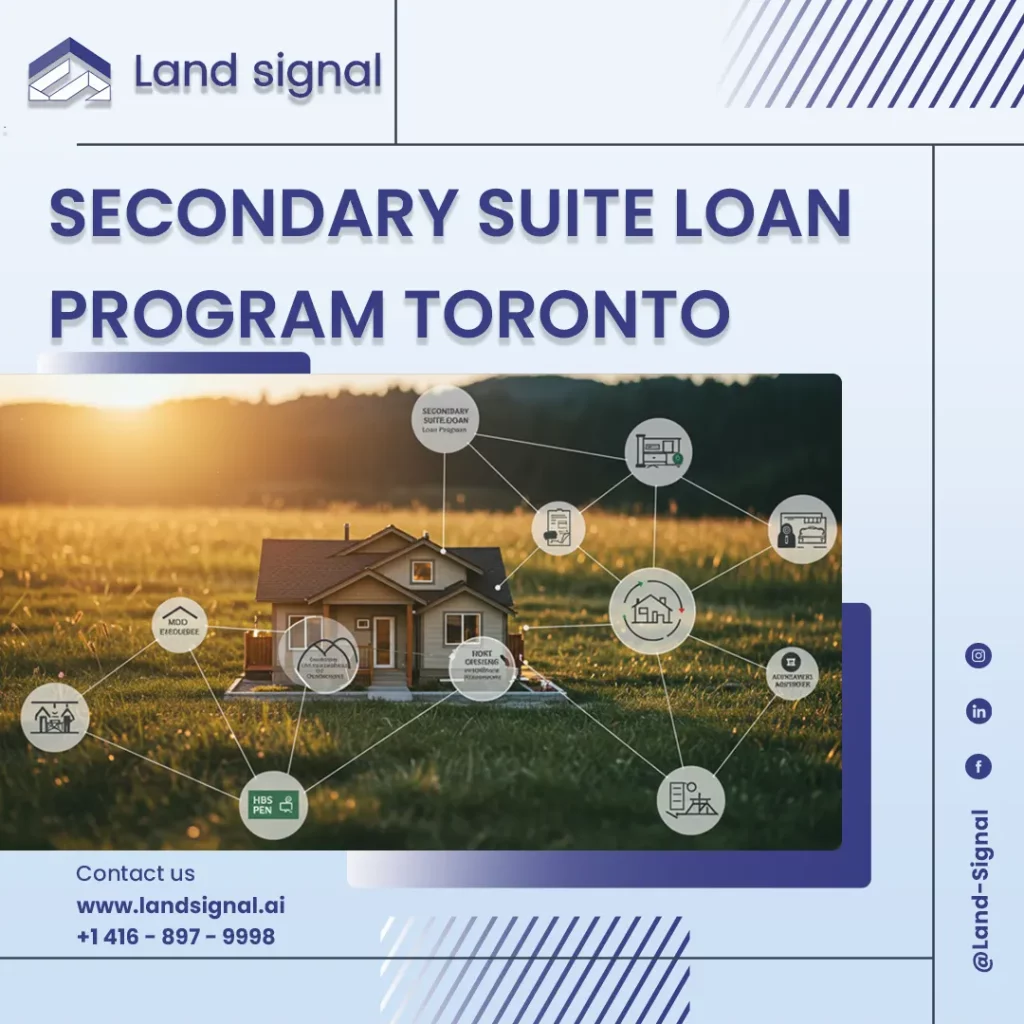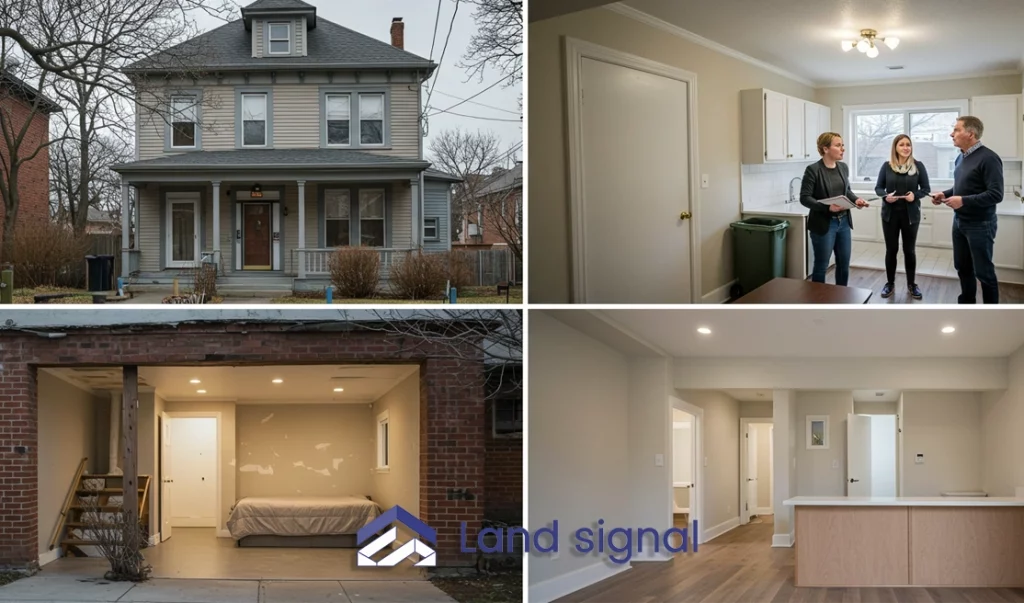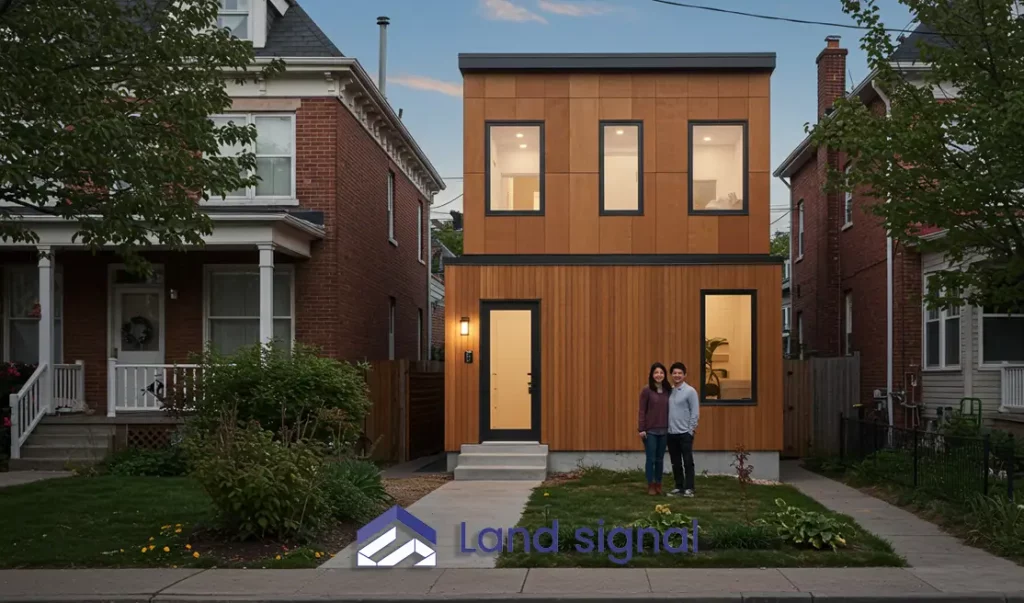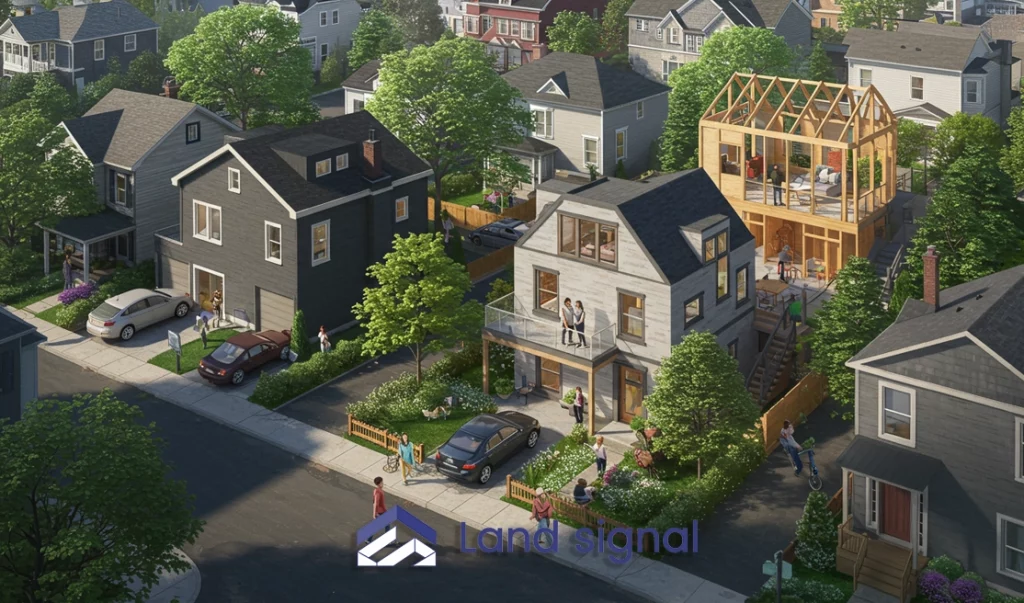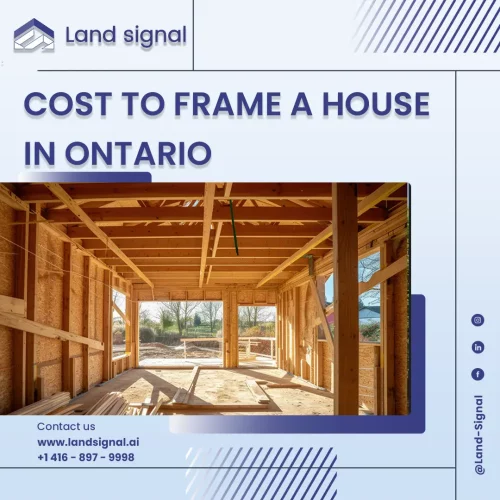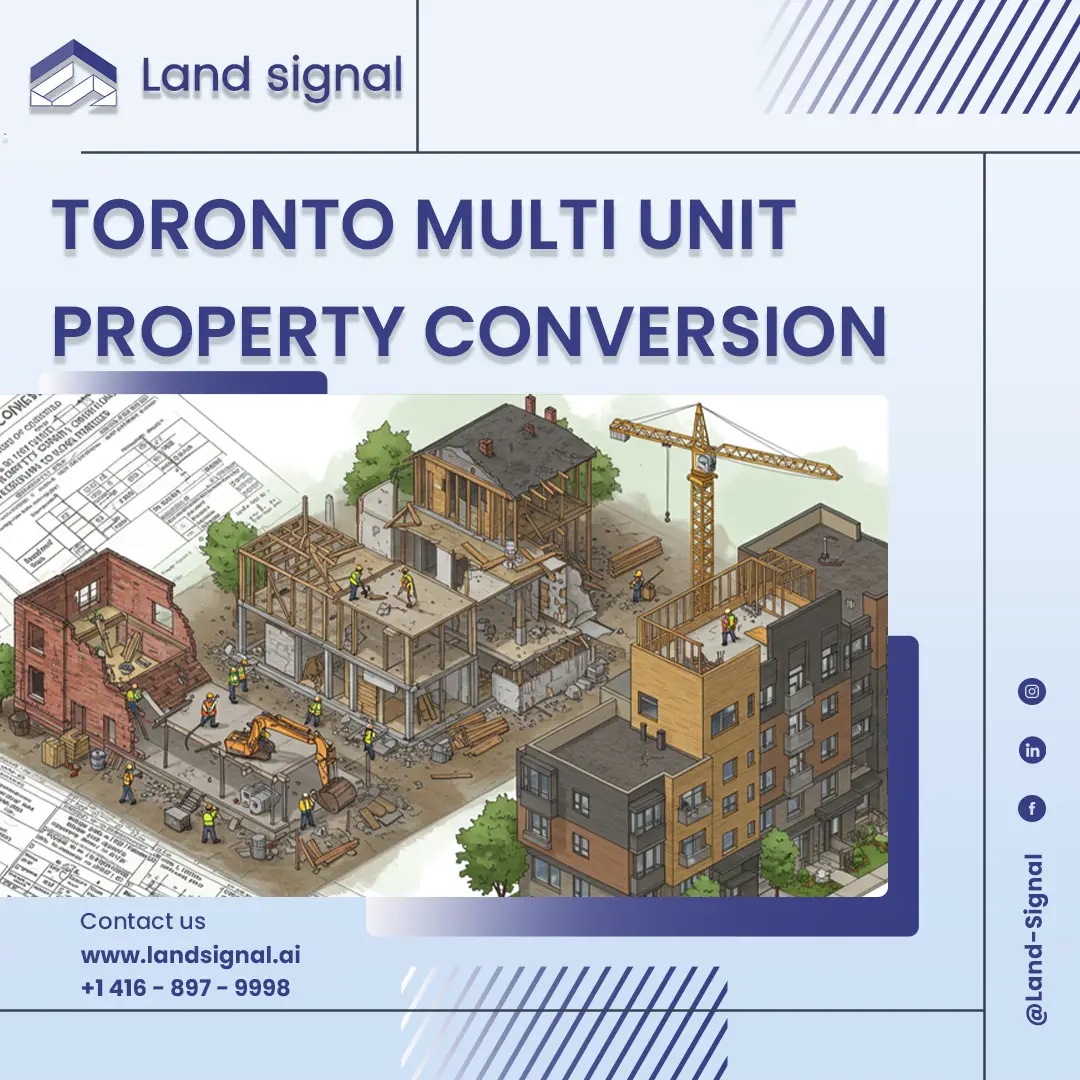The increasing demand for housing in metropolitan areas like Toronto has led to innovative solutions to maximize existing living space. One such solution is the creation of secondary suites, also known as basement apartments or granny flats, within existing homes. These self-contained living spaces offer benefits such as increased residential density, affordable housing options and the potential for homeowners to generate income.
At Land Signal, we specialize in helping homeowners and developers understand the zoning and land use regulations surrounding secondary suites. With the growing popularity of these housing solutions in Toronto, it’s important to ensure that your project complies with city regulations. Our expertise ensures that your secondary suite plans comply with zoning laws, allowing you to navigate the complexities of development smoothly and confidently.
This article provides a comprehensive guide for anyone considering the Secondary Suite Loan Program Toronto, covering the financial, regulatory, and practical considerations involved.
Start Your Project with Confidence
At Land Signal, we assist with construction and renovation permits, as well as Garden House and Laneway Suite designs. Let our experts guide you through every step.
What Is the Secondary Suite Loan Program Toronto?
While the City of Toronto does not currently offer a dedicated “Secondary Suite Loan Program,” this section explores a hypothetical framework for such a program, drawing inspiration from existing initiatives related to home renovations and energy efficiency. A potential Secondary Suite Loan Program Toronto could provide financial assistance to homeowners seeking to create or renovate secondary suites in their properties.
This assistance could take the form of low-interest loans, grants, or a combination of both, to reduce the financial burden associated with secondary suite Toronto development. The program could be designed to incentivize the creation of safe, legal, and affordable secondary suites, contributing to the city’s housing supply and allowing homeowners to generate rental income or accommodate family members.
Such a program could be integrated with existing city initiatives related to secondary suites, streamlining the approval process and providing homeowners with a comprehensive resource for navigating the regulatory landscape.
The program could encourage wider adoption of secondary suites as a viable housing solution in Toronto by providing financial incentives and simplifying the development process.
Key Features of the Hypothetical Secondary Suite Loan Program Toronto
A hypothetical Secondary Suite Loan Program Toronto could incorporate several key features designed to maximize its effectiveness and accessibility:
Income-Based Eligibility
The program could prioritize homeowners with moderate to low incomes, ensuring that the benefits reach those who need them most. Income thresholds could be established to determine eligibility, ensuring that the program targets those who may face financial barriers to secondary suite development.
Property Requirements
Eligibility could be based on specific property types and zoning regulations, ensuring that the program supports the creation of secondary suites in appropriate locations. Properties would need to meet minimum size and safety requirements to qualify for funding.
Suite Standards
The program could establish minimum standards for secondary suite design and construction, ensuring the creation of safe, healthy, and accessible living spaces. These standards could align with the Ontario Building Code and the City of Toronto’s secondary suite regulations, ensuring compliance with all applicable regulations.
Loan Forgiveness Options
The program could offer loan forgiveness incentives for homeowners who commit to renting their secondary suites at affordable rates for a specified period. This would encourage the creation of much-needed affordable housing units in the city.
Streamlined Application Process
A user-friendly application process could minimize bureaucratic hurdles and simplify the application process for homeowners. Online application portals and dedicated support staff could facilitate a smooth and efficient application experience.
Loan Amount and Terms
The hypothetical loan amounts and terms would need careful consideration to balance affordability for homeowners and the program’s financial sustainability. Potential loan amounts could range from a minimum threshold to a maximum cap, depending on the scope of the project and the applicant’s financial capacity. The loan terms could include competitive interest rates and flexible repayment schedules tailored to the homeowner’s financial situation.
The program could also offer different loan products to cater to various needs, such as loans for renovations, new construction, or energy efficiency upgrades. A tiered loan system could be implemented, offering higher loan amounts for projects that incorporate accessibility features or meet specific environmental performance standards.
Eligible Projects
A hypothetical Secondary Suite Loan Program Toronto could support a range of eligible projects related to secondary suite development:
New Construction
Funding could be provided for the construction of new secondary suites in properties that currently lack such spaces. This could involve excavating basements, adding additions, or converting existing spaces into self-contained living units.
Renovations and Upgrades
Loans could cover the costs of renovating existing secondary suites to improve their safety, accessibility, and energy efficiency. This could include upgrades to plumbing, electrical systems, insulation, and ventilation.
Accessibility Modifications
Funding could be specifically allocated for accessibility modifications to secondary suites, making them suitable for individuals with disabilities. This could include installing ramps, widening doorways, and adapting bathrooms and kitchens for accessibility.
Energy Efficiency Improvements
The program could incentivize energy-efficient upgrades in secondary suites, such as installing energy-efficient appliances, upgrading insulation, and implementing renewable energy technologies. This would contribute to the city’s climate change goals and reduce utility costs for homeowners and tenants.
Who Can Benefit from the Secondary Suite Loan Program Toronto?
A hypothetical Secondary Suite Loan Program Toronto could benefit a wide range of individuals and families:
Homeowners looking for additional income
Homeowners could leverage the program to establish a consistent rental income stream by developing a secondary suite. This additional income could significantly offset mortgage payments, property taxes, and other escalating housing expenses, potentially freeing up funds for other financial goals or providing a cushion against rising living costs.
The program’s financial assistance would lower the barrier to entry for homeowners considering this income-generating opportunity, making secondary suite development a more attainable and financially viable option. This could be particularly beneficial for homeowners nearing retirement or those on fixed incomes.
Families accommodating relatives
Families could utilize the program to create comfortable and independent living spaces for elderly parents, adult children returning home, or other relatives requiring separate accommodations. This offers a cost-effective and more personalized alternative to assisted living facilities or separate housing arrangements, allowing families to maintain close connections while respecting individual privacy and independence.
The program could facilitate the creation of multi-generational living arrangements that strengthen family bonds and provide support for loved ones in a familiar and comfortable environment. This can be particularly valuable in a city with high housing costs.
Real estate investors
Real estate investors could benefit from the program by enhancing the value and rental potential of their properties through the addition of legal and compliant secondary suites. Developing these units could attract a wider range of tenants seeking smaller, more affordable housing options, leading to higher rental income and a stronger return on investment.
The program’s financial incentives would encourage investors to contribute to the city’s rental housing stock, addressing the growing demand for diverse housing options and playing a role in alleviating rental shortages. This can contribute to a healthier and more balanced rental market.
First-time buyers
First-time buyers, often facing significant financial hurdles, could utilize the program to offset the costs of homeownership by generating rental income from a secondary suite.
This supplementary income could make monthly mortgage payments more manageable and reduce the overall financial burden of homeownership, making homeownership more attainable and less daunting for individuals and families entering a competitive housing market. The added income potential could also help first-time buyers build equity more quickly, providing a stronger financial foundation for their future.
Benefits of the Secondary Suite Loan Program Toronto
A hypothetical Secondary Suite Loan Program Toronto could offer numerous benefits to homeowners, tenants, and the city as a whole:
Financial Assistance
The program would provide crucial financial assistance to homeowners, directly addressing the significant upfront costs associated with secondary suite development, making these projects more affordable and accessible to a broader range of homeowners. This financial support could bridge the gap for those who might otherwise struggle to secure traditional financing or manage the expenses of renovations and construction.
The program could offer a variety of financial incentives, such as low-interest loans, grants, or tax credits, tailored to individual needs and project scopes. This would encourage more homeowners to participate and contribute to the city’s housing supply.
Income Generation
Secondary suites can offer homeowners a reliable and consistent source of rental income, significantly improving their financial stability and providing a valuable buffer against rising living expenses or unexpected financial challenges. This additional income stream can be particularly beneficial for seniors on fixed incomes, families with limited financial resources, or individuals facing job insecurity.
The rental income generated from a secondary suite can enhance financial well-being and provide greater peace of mind. This can also contribute to greater economic stability within communities.
Increased Home Value
The addition of a legal, well-designed, and properly permitted secondary suite can substantially increase a property’s market value, offering homeowners a significant return on investment and enhancing their overall equity. This added value can provide greater financial flexibility, enabling homeowners to access more favorable loan terms or leverage their increased equity for future investments.
The improved property value also strengthens the homeowner’s financial position and provides a valuable asset for long-term financial security. This can be a key factor in building generational wealth.
Affordable Housing
Secondary suites play a vital role in increasing the supply of affordable housing units within the city, providing more housing options for individuals and families struggling with high rental costs and limited housing choices. By incentivizing the creation of these units, the program would contribute to addressing the city’s ongoing housing affordability challenges and creating a more inclusive housing market that caters to a wider range of income levels. This can lead to more diverse and vibrant communities.
Flexible Living Arrangements
Secondary suites offer homeowners and their families greater flexibility in their living arrangements, allowing them to accommodate extended family members, adult children returning home, or aging parents requiring support while maintaining individual privacy and independence.
This can foster stronger family connections and provide a cost-effective and supportive living environment for loved ones. This flexibility can be invaluable in adapting to changing family dynamics and providing support during various life stages. This can also contribute to reduced strain on public resources and support systems.
Application Process for the Hypothetical Secondary Suite Loan Program Toronto
The application process for a hypothetical Secondary Suite Loan Program Toronto could involve the following steps:
Confirm Eligibility
Before applying, homeowners would need to confirm their eligibility based on factors such as income, property type, and zoning regulations. This could involve checking the program guidelines, consulting with city staff, or using online eligibility tools. Confirming eligibility early in the process can save time and avoid unnecessary applications.
Understand Financial Requirements
Applicants would need to carefully review the program’s financial requirements, including loan amounts, interest rates, repayment terms, and any associated fees. This could involve consulting with financial advisors or using online loan calculators to assess the financial implications of the program. Understanding the financial requirements is crucial for making informed decisions and managing expectations.
Read Also: Home Building Cost Calculator Ontario
Documentation Preparation
Applicants would need to gather the necessary documentation, such as property ownership documents, income verification, and detailed plans for the secondary suite. This could involve working with architects, engineers, or other professionals to prepare the required documentation. A complete and accurate application package can expedite the review process and increase the chances of approval.
Application Submission
Once the documentation is complete, applicants can submit their application through an online portal or in person at a designated city office. The application process should be user-friendly and accessible to all applicants. Clear instructions and support resources should be available to guide applicants through the process.
Application Review
The submitted applications would undergo a thorough review by city staff, who would assess the project’s feasibility, compliance with regulations, and alignment with the program’s objectives. The review process could involve site visits, consultations with experts, and a detailed analysis of the submitted documentation. Applicants will be notified of the status of their application throughout the review process.
Wait for Approval and next steps
After the review process, applicants would be notified of the decision regarding their application. If approved, they would receive a loan agreement outlining the terms and conditions of the loan. Upon accepting the agreement, homeowners could begin construction or renovation work on their secondary suites. Regular inspections and progress reports may be required to ensure compliance with the program’s requirements.
Approval Process
The approval process would involve a detailed evaluation of the application materials, including the project plans, financial information, and compliance with zoning and building code regulations. The evaluation criteria could include factors such as the project’s feasibility, its contribution to affordable housing, and its impact on the surrounding neighborhood. The approval process should be transparent and efficient, providing applicants with timely updates and feedback.
Loan Agreement
Upon approval, applicants would receive a loan agreement outlining the loan amount, interest rate, repayment terms, and any other conditions associated with the loan. The loan agreement should be clear and concise, outlining the rights and responsibilities of both the lender and the borrower. Applicants should carefully review the loan agreement before signing it.
Begin Construction
Once the loan agreement is signed, homeowners can begin construction or renovation work on their secondary suites. They should ensure that all work is performed by licensed contractors and complies with all applicable building codes and regulations. Regular inspections may be required to ensure the quality and safety of the construction work.
Conclusion
Developing a secondary suite can be a valuable investment for homeowners in Toronto, offering opportunities for income generation, increased property value, and flexible living arrangements. While a dedicated city-wide loan program doesn’t currently exist, exploring the potential framework for such a program highlights the importance of financial assistance in promoting secondary suite development. By addressing the financial, regulatory, and practical considerations associated with secondary suites, homeowners can make informed decisions and navigate the development process successfully.
A well-designed Secondary Suite Loan Program Toronto could play a crucial role in encouraging the creation of safe, legal, and affordable secondary suites, contributing to Toronto’s housing supply and enhancing the city’s housing affordability. By understanding the complexities of secondary suite development and leveraging available resources, homeowners can unlock the full potential of this valuable housing option.

